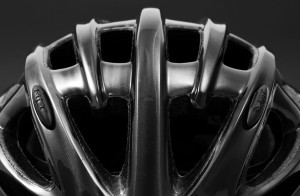Cycling Helmets 101
By Daniel E DAngelo Esq on December 15, 2015
It’s no secret that biking is a passion for the crew at D’Angelo Law. One thing you won’t see though – any of us riding without a helmet. I understand that wearing a helmet doesn’t necessarily appear stylish or ‘cool,’ but is fashion your reason for riding? There are plenty of reasons to get out on your bicycle, but none related to a style critique.
 There is one thing we are consistent about on the D’Angelo blog – safety. We focus on it daily. Prevention is essential in minimizing injuries on American roadways. It applies to bicycling just as much as automobiles. Wearing a bicycle helmet is one of the best ways riders can reduce injuries during their rides. A helmet can help minimize the damage done when a rider falls and hits their head. Head injuries are one of the primary concerns in any collision, as the skull is fragile and an impact can easily be fatal.
There is one thing we are consistent about on the D’Angelo blog – safety. We focus on it daily. Prevention is essential in minimizing injuries on American roadways. It applies to bicycling just as much as automobiles. Wearing a bicycle helmet is one of the best ways riders can reduce injuries during their rides. A helmet can help minimize the damage done when a rider falls and hits their head. Head injuries are one of the primary concerns in any collision, as the skull is fragile and an impact can easily be fatal.
If you’re still not certain about wearing a helmet on your next ride, check the numbers:
- Helmet use is estimated to reduce the odds of head injury by 50 percent.[1]
- Additionally, injuries to the face or cheek may be reduced by as much as 33 percent.[2]
- Injuries to riders not wearing helmets cost the public over $2 billion dollars annually in the United States.[3]
- 1,000 people die every year in the United States from bicycle related collisions.[4]
Wearing a helmet can be the difference between icing down your bruised elbow and bumped head and a trip to the emergency room or worse. Before you head out on the road, path, or trail, you need to get yourself a properly fitted helmet. This brings us to another point, how do you pick the right helmet?
Picking the Perfect Helmet
– First things first…take a look at the packaging for the helmet you’re looking at. It’s essential that it meets the standards sets by the Consumer Product Safety Commission. It’s a simple as this, if the label says ‘bicycle helmet’ it needs to meet those standards. Check inside the helmet for a CPSC just to be sure.
– The cost of a bicycle helmet varies significantly, but you should know that you’re really paying for style, not safety. Less expensive helmets perform just as well as their high-dollar counterparts, as long as they are certified by the CPSC. This means you don’t have to spend a ton of cash to protect yourself when you’re on your bike. Just find a helmet that it is certified and fits properly.
The next part of picking the best helmet for you is ensuring a proper fit. Here are some guidelines to consider as you try different helmets:
- The helmet should fit snugly on your head. It shouldn’t cause pressure to the point of discomfort, but the pads should be in contact with your head the whole way around.
- Keeping the helmet level is also essential. It should sit on your head evenly and should cover most of your forehead. A helmet that tilts back is too small and will not offer the best protection.
- Next you’ll want to check the straps. They are adjustable so most one-size fits all helmets should work; you just may have to play around with them a bit. The Y on the straps should meet just below your ear, and the strap should fit snugly against your chin.
- If the helmet almost fits but isn’t quite right, you may be able to make small adjustments to find a proper fit. Look at the pads in the helmet and see if there are ways to shift or move them for a better feel. Just remember not to remove any padding.
Easy, proper fitting is one area where more expensive helmets may have an advantage. Rather than a one-size fits all approach, many of the top of the line helmets come in sizes. Another nice perk is that quality bicycle stores who sell these helmets will often have experts on staff ready to help you find the perfect fit.
However, a standard, (much) less expensive helmet will work and keep you safe just as well. When it comes down to finding the perfect fit and the style for your bicycle helmet – then that’s up to you!
[1] http://www.iihs.org/iihs/topics/t/pedestrians-and-bicyclists/fatalityfacts/bicycles
[2] http://www.iihs.org/iihs/topics/t/pedestrians-and-bicyclists/fatalityfacts/bicycles
[3] http://healthresearchfunding.org/compelling-bicycle-helmet-statistics/
[4] http://healthresearchfunding.org/compelling-bicycle-helmet-statistics/


